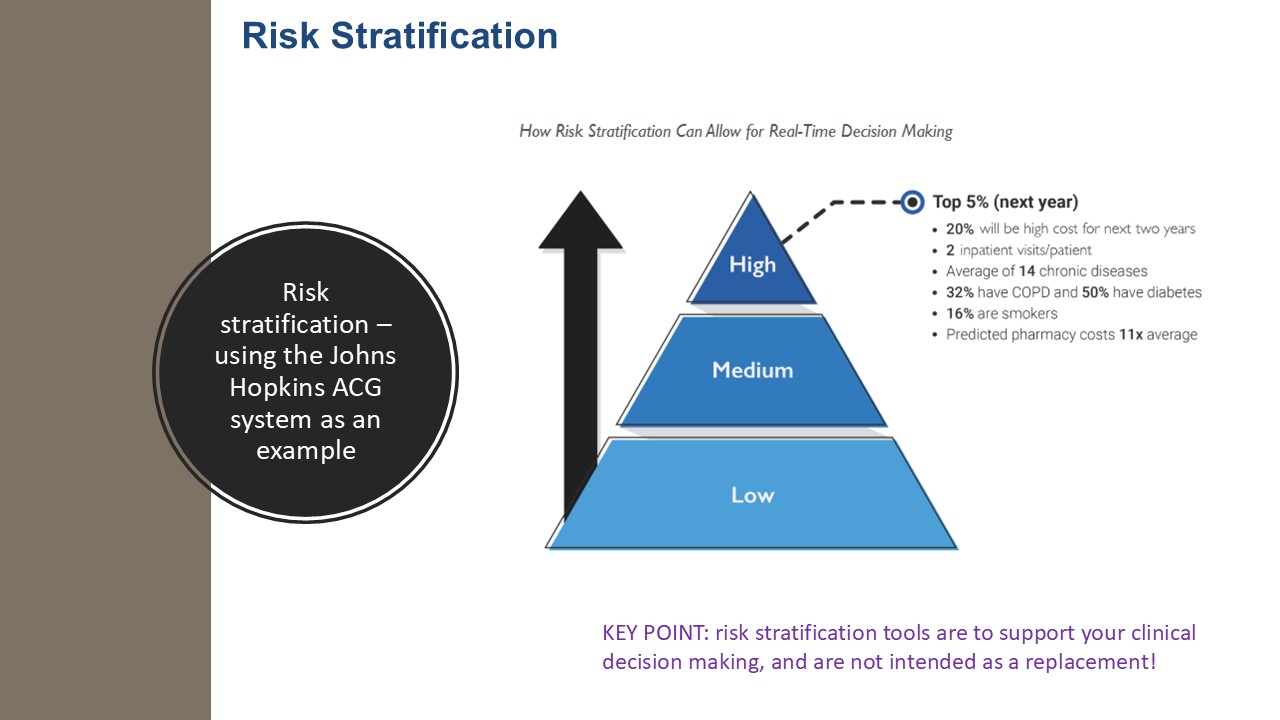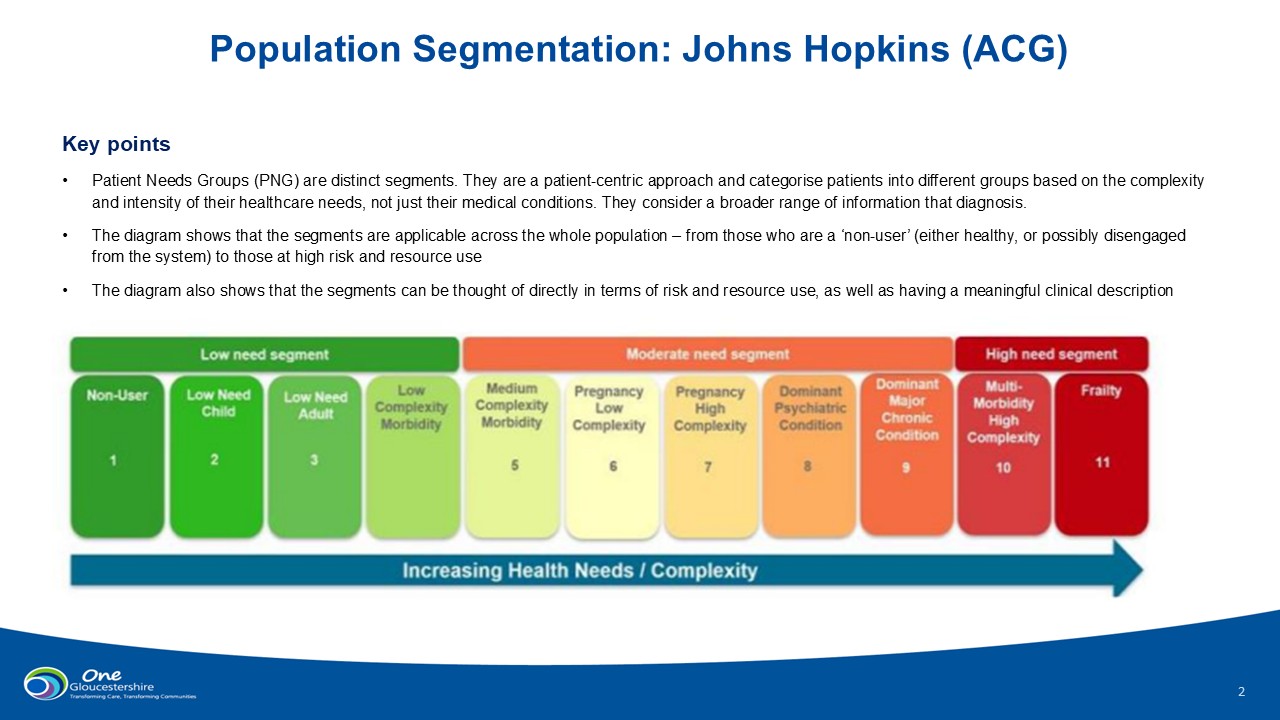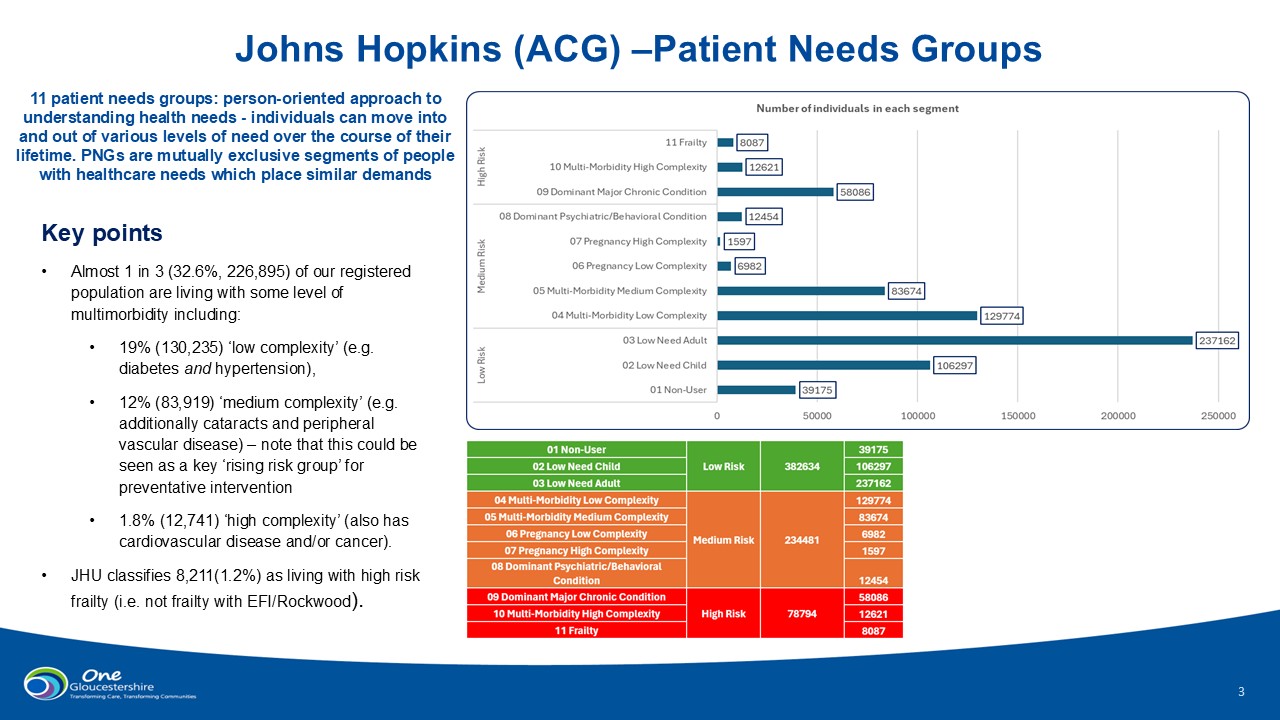Risk stratification is a technique to evaluate the population of Gloucestershire and give each individual resident a unique risk score.

What is risk stratification?
As above, risk stratification is a technique to evaluate the population of Gloucestershire and give each individual resident a unique risk score. This is done by stratifying the population, assessing each individual’s health needs against the context of numerous factors such as age, gender, ethnicity, postcode, underlying health conditions, family history, among others.
By giving people an individual risk score, we can then determine the best ways to predict their future health and care needs. We do this using population segmentation and in Gloucestershire we use a segmentation tool called Johns Hopkins ACG.
What is population segmentation?



Population segmentation is a method for dividing our population in Gloucestershire into segments based on shared characteristics. Johns Hopkins ACG segments people into 1 of 11 Patient Need Groups:
- Non-User
- Low Need Child
- Low Need Adult
- Low Complexity Morbidity
- Medium Complexity Morbidity
- Pregnancy Low Compexity
- Pregnancy High Complexity
- Dominant Psychiatric Condition
- Dominant Major Chronic Condition
- Multi-Morbidity High Complexity
- Frailty
We use these Patient Needs Groups to help us apply PHM principles to projects that come through the PHM Pipeline.
